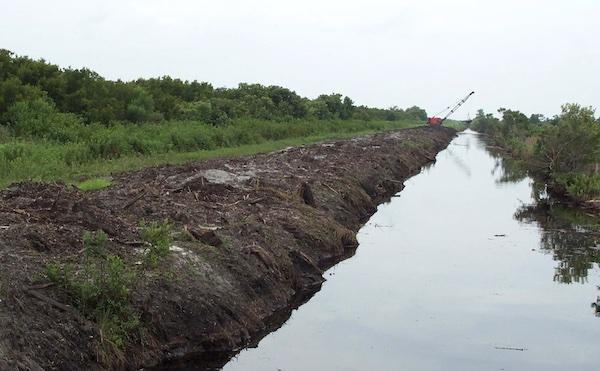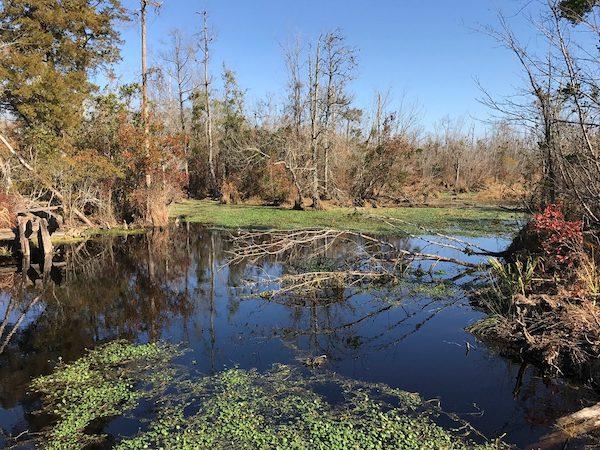A recent article in Coastal Review (a service of the North Carolina Coastal Federation) about the possibility of “farming carbon” in peatlands of northeastern North Carolina via carbon sequestration and trading and carbon trading markets caused me to revisit some work from my younger days—a frequent diversion for old codgers like me. Many of the pocosin wetlands were artificially drained by ditches and canals sometime between the 18thcentury and the 1980s, and the key to maximizing carbon sequestration there is restoring the wetland hydrology. Back in the 1980s I did some work on artificially drained peatlands in the region, and in the 1990s on other artificially drained farmland in eastern N.C. One of the bottom lines was that this is a case where passive restoration works. In other words, if you simply don’t maintain the ditches and canals, they rapidly lose conveyance capacity and essentially become linear ponds. In some contract work I did for the Croatan National Forest in N.C. in 1997, in fact, I recommended passive restoration—there was no need to fill in canals or remove water control structures, etc. Just let the channels deteriorate and leave the structures in obstructing mode (i.e., leave the boards in the flashboard risers).

Drainage canal maintenance in N.C. peatlands. To restore wetland hydrology, don’t do this! (Photo: National Wildlife Service).
A key site for restoration is the Pocosin Lakes National Wildlife Refuge, so I took a look at their (draft) water management plan. It basically confirmed what we had figured out in the 1980s. Their no-action alternative and their proposed plan of action essentially concluded that simply leaving things alone, drainage-wise, would have no significant adverse impacts and would restore the wetland hydrology. The only significant differences between the proposed plan and the no-action alternative are extensive monitoring in the former (and as a scientist, who can argue with that?), as well as some new water control structures. I have not analyzed the plan in detail to give an opinion on the necessity of the latter, but I do recognize that national wildlife refuges are indeed managed to optimize habitat for target species, and the NWS may well want or need to do some active water control to create or maintain habitats or manage fire risks (when it dries out, peat burns!).

Wetlands restoration site in the Pocosin Lakes National Wildlife Refuge (Photo: The Nature Conservancy).
I was, at first, mildly miffed that the NWS folks did not cite any of my work from the old days (the academic ego remains healthy even in retirement). However, upon revisiting it, I realized that much of that work focused on issues other than hydrological restoration, did not deal specifically with pocosins or peatlands, or mentioned the passive restoration opportunities only in passing. The only exception, based on the M.A. thesis work of Don Belk at East Carolina University and lead-authored by Don, was published in a conference proceedings volume that could be easily overlooked. Don’s work showed that hydrological restoration of Altantic White Cedar wetlands in northeastern N.C. could be accomplished by simply leaving the flashboard risers in, and not cleaning out the ditches and canals (which must be cleared every couple of years to keep them flowing).
There is an active debate in the hydrological and ecological restoration literature about passive vs. active restoration that I have no intention of getting into. Passive restoration is not always the best choice; it may be too slow or may not achieve the desired objectives. However, it should always be an option on the table, for two main reasons. First, nature usually knows best, and can often do what needs doing better than we can. When feasible, resist the temptation to tinker! Second, assuming something is already set aside for restoration, the costs are zero.
